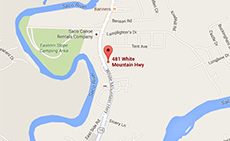2015 Taxes
As usual there are plenty of unknowns and changes as we close the 2014 tax year and prepare to file tax returns in 2015.
First, the good news. Tax rates are unchanged for the first time in a while — the bottom rate remains at 10 percent and the top rate remains at 39.6 percent. Personal exemptions and standard deductions are adjusted slightly for inflation.
As expected, there are a number of provisions unchanged from 2013, including IRA contribution limits ($5,500 or $$6,500 if over 50), Gift Tax exclusion limits ($14,000), and the Kiddie Tax threshold ($2,000). The Pease limitation, which returned for 2013, remains in effect and limits the amount of itemized deductions allowed for high income earners ($254,200 single; $305,050 married).
The new safe harbor method for deducting home office expenses returns as do last year’s new taxes compliments of the Affordable Care Act (ACA) — the Net Investment Income Tax and the Additional Medicare Tax. In tax world, ACA is the gift that keeps on giving, so there are more new tax provisions kicking in this year.
First is the Premium Assistance Tax Credit reconciliation. Anyone who qualified for subsidized health insurance through the government exchanges will have to reconcile subsidies received against subsidies earned and report the difference on their 2014 tax return.
Taxpayers who purchased insurance through the exchanges, and qualify for subsidies not received, can claim those subsidies on their 2014 returns. In addition, the ACA’s individual mandate began in 2014, requiring everyone to purchase and maintain qualified health insurance for every month of the year, unless a qualifying exemption was granted. Those who fail to meet this requirement must calculate their Individual Shared Responsibility Payment and include it on their 2014 return.
Finally, there are many tax breaks that expired at the end of 2013 which have not yet been renewed. Some of the most popular of these “extenders” are the $250 adjustment for classroom expense by teachers, the itemized deduction for state and local sales taxes and the exclusion of personal residence debt from income. Many in the tax industry believe these breaks may be brought back, retroactively, before the end of the year causing issues for IRS, software vendors, tax preparers, and tax filers.
The 2015 tax filing season “will be one of the most complicated filing seasons we’ve ever had,” IRS Commissioner John Koskinen said in an address to tax professionals at the end of October.
Brian is a CPA at Gamwell Caputo Kelsch & Co., PLLC in Conway, NH and can be reached at 603-447-3356. Brian welcomes any article feedback or questions for future article consideration.



